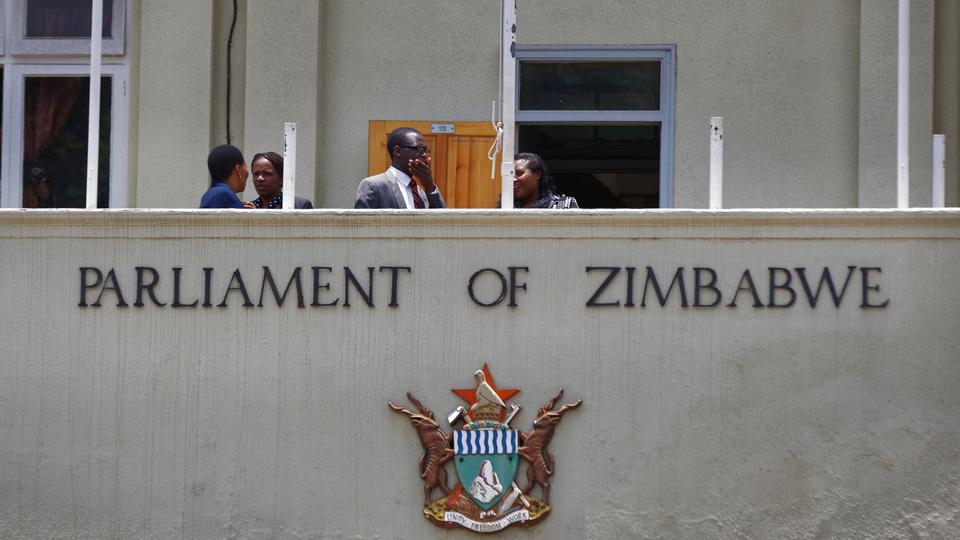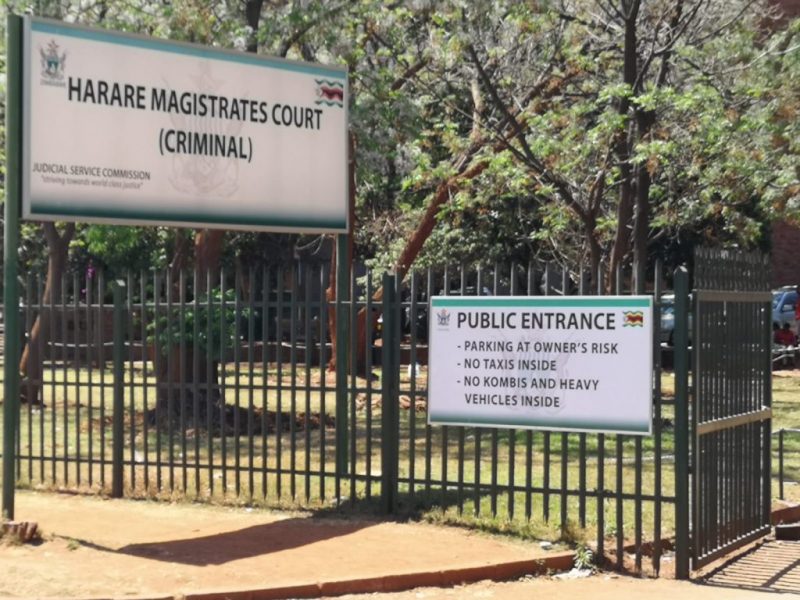
Zimbabwe Agenda for Sustainable Socio-Economic Transformation (ZimAsset) is an economic policy much celebrated in the political front, but with nothing much to bring home from the economic perspective.
By Blessing Machiva
Zimbabwe has crafted so many economic policies from the early 80s, but all of them share a major flaw, they are too theoretical.
ZimAsset’s aims and objectives are too many to be achievable within its set time frame. The government just went on identifying the problems and areas that needed attention in the economy and then cited those as the aims of the policy that should be achieved within a time frame of five years.
On that note, one would understand that the major problems facing our country date back from the early 1980s and there is need for long-term robust measures to address the problems deep-seated in the structure of the economy.
Just like the other economic policies drawn in our country, ZimAsset was good at stating growth targets and objectives, but it is not fully laid out in the plan on how these targets and objectives will be achieved given the prevailing situation on the ground.
For the programme to be fully implemented it required $27 billion, but the policy was dead silent on how that amount of money was going to be secured.
Much of the ZimAsset hopes were underpinned on the “Look East Policy”, which later proved that there is nothing tangible to be gained there. We haven’t seen any positive benefits being reaped from the Zimbabwean friendships with the Eastern countries apart from their poor quality products that have flooded our local markets.
- Chamisa under fire over US$120K donation
- Mavhunga puts DeMbare into Chibuku quarterfinals
- Pension funds bet on Cabora Bassa oilfields
- Councils defy govt fire tender directive
Keep Reading
Those Eastern countries are there to explore foreign markets to sell their domestically produced goods, not to significantly invest in an economy like ours.
Zimbabwe has actually lost from those Asian deals including the more painful loss of $15 billion diamond proceeds. That money could have been used to partly fund the aims of ZimAsset and by now the country could have been a milestone ahead than the dire state that we are currently in.
Our leaders have been overzealous with this “Look East Policy” and they flew numerous times to China and brought only briefcases full of unyielding signatures and empty promises. Surely, our country is far away from being rescued by these Asian deals.
Other purported sources of funding, according to ZimAsset, are tax and non-tax revenue; leveraging resources; issuance of Bonds; accelerated implementation of Public Private Partnerships; re-engagement with the international and multilateral finance institutions etc.
With the unemployment rate looming above 90%; a high rate of company closures and below capacity utilisation, the government was ill-advised to expect much revenue from the income, corporate and indirect taxes. Of course our country is endowed with precious resources estimated to be worth trillions of US dollars, but as long as these resources remained unexploited, then they cannot be of much significance and benefit to the nation.
This means that first and second options are out in terms of funding the ZimAsset projects of which the third option wouldn’t yield any positive results considering high poverty levels in our country. Individuals and companies can’t afford to purchase much of those bonds because of low savings emanating from the little incomes being generated.
Option four would have worked well only if the country had a good private sector base with well-performing companies that would partner the government, unfortunately the country doesn’t have. Option 5 was going to be of use if only the country had been able to service its over $12 billion external debt for it to be able to access new funding. This debt crisis facing Zimbabwe cannot be solved overnight especially with our “supermarket budget” of $4 billion.
Analysis of all the above facts would mean that right from the onset, ZimAsset was a void economic policy that’s why it failed to yield results from the time it was implemented up to now.
The government crafted ZimAsset on its three major pillars which are indigenisation, empowerment and employment creation.
These pillars are the weakest points of this policy especially the most criticised one, indigenisation policy.
This has created a major setback on the country’s FDI inflows and foreign investors saw this policy as a major blow to their investments in this country hence most of them withdrew their investments.
This came along with massive closure of companies, capital outflow and dwindling foreign funding leaving the existing companies struggling. The reason why the financial sector survived this catastrophe is because the then central bank governor, Gideon Gono advised the proponents of indigenisation policy to leave that sector alone.
We have also recently witnessed furious fights and confusion between government ministers concerning this issue of indigenisation when the Youth, Indigenisation and Economic Empowerment Minister wanted to touch the financial sector then the Minister of Finance had to use all the powers within his jurisdiction to stop him.
It was quite clear that ZimAsset was incapacitated to create jobs and empower the nation since its major pillar of indigenisation worked contrary and negatively towards expanding and bringing employment opportunities. The economic policy aimed at creating 2,2 million jobs by 2018 but the opposite actually happened; more companies closed; a lot of workers were fired on three months’ notice and the government embarked on rationalisation of workforce leading to loss of employment and creation of 2,2 million vendors instead.
Instead of attracting more investments, our officials are harassing existing investors and scaring away potential ones. The government tortured Telecel due to its failure to comply with indigenisation policies until when the government had to take over the institution by purchasing 60% stake worth $40 million from Vimpelcom.
Econet struggled to secure a licence to operate, not mentioning the current furious court fights between Kwese TV and BAZ. At a time when the government should be attracting and allowing many investors in the market but that’s when it is expelling them.
The growth targets for the country as per ZimAsset are 3,4% for 2013; 6,1% for 2014; 6,4% for 2015; 6,5% for 2016; 7,9% for 2017 and 9,9% for 2018. These growth targets were never met; the one for 2016 was revised to 2.7% before being further reduced to 1,2% on account of failing global commodity prices and the negative impact of drought and that of 2017 to 3%. This is a clear indication of the failure of this economic policy to revive the economy.
The government made it clear in the ZimAsset that it will continue using the multi-currency system before turning the tables later and introduced bond notes in the evening of 2016 against the advice from the nation and prominent economists. This destroyed all the sanity and confidence that had been established in the financial sector (contrary to the ZimAsset’s aim of improving financial stability) and investors withdrew their investments as they feared the back door return of the Zimbabwean dollar, inflation and speculation surged; capacity utilisation further dwindled as firms failed to secure foreign currency to import necessary raw materials from abroad and the supply of commodities in the local market reduced.
The bond note drove away the little foreign currency that had remaining in the market and liquidity crisis loomed despite the ZimAsset aim of solving it. The monetary authorities folded their hands and blamed the nation for having a huge appetite for cash, forcing it to embrace plastic money, prices going nearly 50% higher when doing transactions with the plastic money than with cash. Banks and Mobile money transfers benefitted from charging numerous transactions made by the households on daily basis. This increased the cost of living for households, eroded their incomes and increased poverty rates.
The ZimAsset period had been an era of policy inconsistency (despite the government’s plans to address it in the ZimAsset document) poor policy formulation that costed the nation. We witnessed embarrassing public policy reversal and sudden U-turns especially in the Ministry of Finance which should have led the successful implementation of the plan.
The Minister of Finance implemented Statutory Instrument 20 of 2017 on February 1 and made a public announcement that 15% value-added tax was to be imposed on all meat products and cereals. On the February 7, 2017 the same minister issued another Statutory Instrument to be effected on February 16, 2017 in cancellation of the previously gazetted one and exempting the same said products from being charged value-added tax. This was not the first time Finance minister Patrick Chinamasa had made a U-turn due to public pressure.
In 2015, while presenting his Mid-term Budget Review, the minister announced that the government had banned the importation of second hand clothing and shoes before reversing that same policy after facing public criticism.
In June 2016, Industry and Commerce minister Mike Bimha issued (SI) 64 of 2016 which banned the importation of 42 products. Due to public pressure and resistance, the policy was later amended and individuals are now allowed to import specific quantities of selected products.
In the dawn of second term 2017, the Minister of Primary and Secondary Education announced that rural schools can accept payment of tuition fees in the form of goats in the face of this liquidity crisis. This has been ridiculed so much on social platforms. Surely, is this ZimAsset that gathered so much popularity in the political arena during its reign?
ZimAsset also stressed much on robust infrastructure network including the rehabilitating and upgrading national power grid, road and rail network, water storage supply and sanitation etc. However, nothing much has been done in this category, roads in Zimbabwe are potholes, many bridges damaged and His Excellency declared a State of Emergency on many roads in the last rain season.
The National Rail system is down and the parastatal has been crippled by massive corruption and gross incompetencies of which ZimAsset did nothing to revive the company apart from empty promises carried in briefcases from abroad.
Nothing much has been done on the National Power Grid except the Kariba South Extension that is taking so many years to complete.
So many projects of power generation have been cited on September 10, 2017 on the national television broadcaster by the Minister of Energy as being under different stages of completion, with the most astonishing ones Gwayi and Lusulu in Binga which they say had a capacity to generate around 600MW when in actual fact everything is just on paper with zero development or sign of the said project on the ground. Are these the kind of points that we are counting on ZimAsset score sheet?
Having failed to resuscitate the economy and to boost industry operations so as to be able to collect more tax revenue, the government blamed its hard and poor workers for chunking a whopping 96,8% of the collected revenue in wages leaving the economy with no revenue to channel towards developmental projects.
Workers were laid-off in what they referred to as rationalisation of the workforce with a shocking U-turn of the said move mid-August 2017 that saw about 3 000 youth officers being reinstated back on the government workforce.
Efforts to create fiscal space failed against background of rising recurrent expenditure and shrinking tax base. Laid-out plans of debt-management were dumped further tightening doors to external sources of financing.
Corruption surged, with public funds being misused and diverted to serve personal interest whilst the said perpetrators received diplomatic immunity. Auditor General, Mildred Chiri continued exposing the gross mismanagement of funds taking place in most parastatals and local authorities in the country but with no any reasonable action being carried out by the responsible authorities.
Zimbabwe was ranked 150/168 on 2015 Corruption Perception Index (CPI) survey published by Transparency International. The Transparency International Zimbabwe (TIZ) reported in 2016 that the country was losing at least $1 billion annually to corruption, with police and the local government officials being among the worst offenders.
All this is against the aims of the ZimAsset to deal with corruption, improve efficient use of public resources and to improve accountability at all levels of public administration.
The quality of education continued to decrease due to rising poverty levels, poor and deteriorating infrastructure, lack of textbooks, rushed and confused implementation of the new education curriculum. In hospitals, conditions worsened, death rate tolled due to lack of drugs, equipment and higher poverty levels causing people fail to secure money to pay hospital bills and drugs.
Nothing improved on housing, water and service delivery by local authorities with the “City Fathers” blamed for inefficiency, corruption (that include personal allocation of state land) and failure to improve on waste collection in many urban areas. Erratic supplies of water continued in urban areas with the bulk of it being said to be contaminated and not safe for drinking.
However, despite the notable failures of ZimAsset, the policy continued to gain much popularity in the political arena, with few traceable successful projects like the Command Agriculture, completion of the Tokwe-Mukosi Dam, Kariba South Extension and the dualisation of the Plumtree-Mutare road being on the map.











